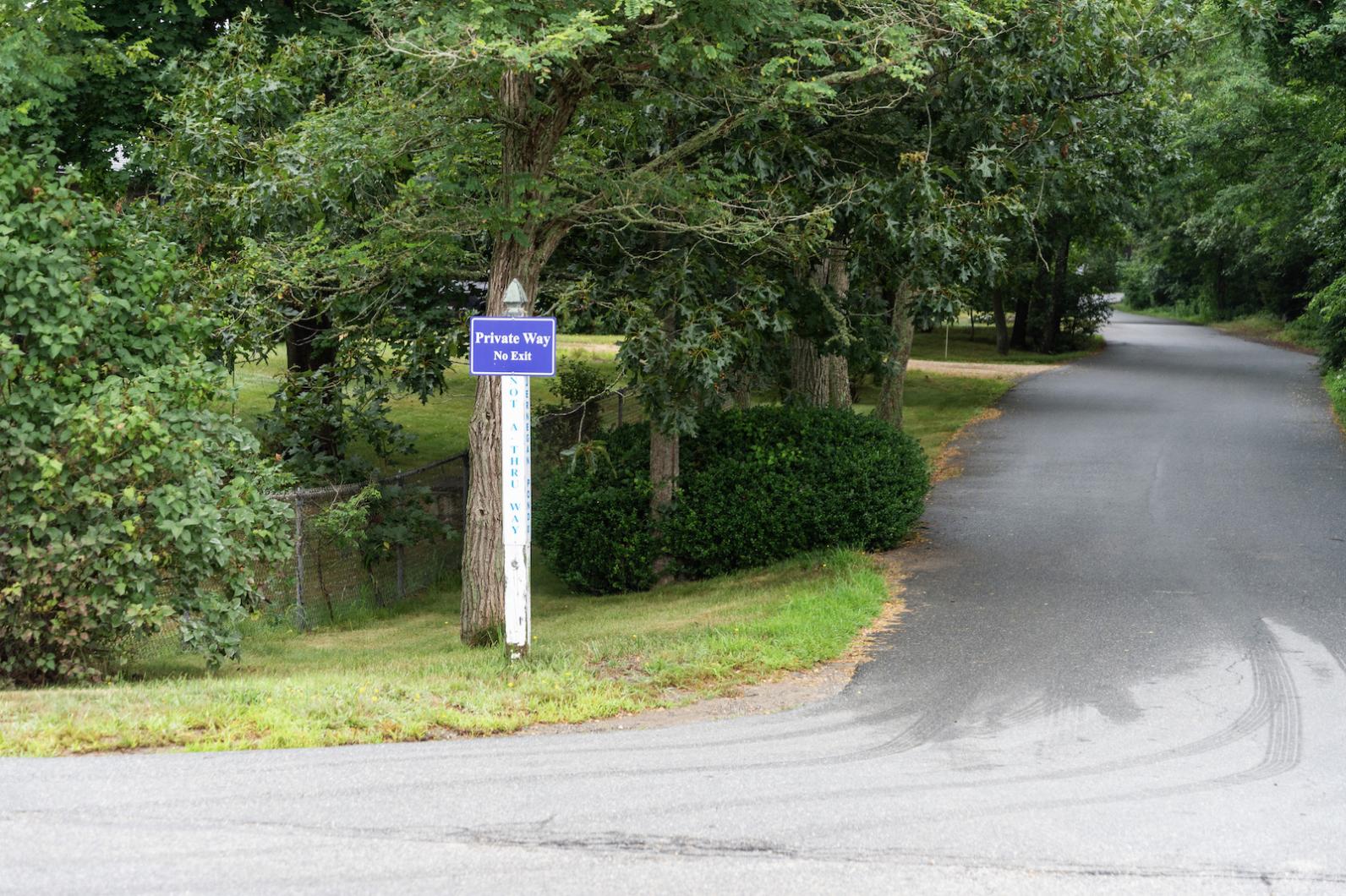An Edgartown subdivision plan that aims to tackle the Island’s middle-income housing shortage is headed for deliberations by the Martha’s Vineyard Commission following the conclusion of a public hearing Thursday.
Attorney Rob McCarron, trustee for the Jean G. Cohen Family Trust, is proposing to subdivide a 17-acre property owned by the trust into seven market-rate building lots and 10 smaller, lower-priced lots that would be deed-restricted to Islanders who live and work here year-round.
Owned by the estate of the late Jean Hathaway Cohen, the property is situated around Jernegan Pond just off the West Tisbury Road.
A public hearing opened in July on the project, which aims to make building lots available at below-market rates for middle-income Islanders.
“Persons earning up to 200 per cent of the area median income are the target demographic . . . who might be able to buy one of these lots [for] $225,000,” Mr. McCarron told commissioners Thursday.
He said he has committed to finding at least five buyers who are essential workers, such as educators, first responders and nurses, for the smaller home sites.
The parcels, which he is calling community lots, will average 7,964 square feet with deed restrictions including a three-bedroom limit.
In addition to meeting the income qualification, buyers also must have lived on the Vineyard for 10 years and own assets adding up to no more than 150 per cent of the fair market value of the smaller lots, which Mr. McCarron estimated at about $900,000 each.
A slew of other deed restrictions include a requirement that lot owners build their houses within three years and live in them for at least 10 months a year, with a right to rent out their homes no more than three times a year for an annual maximum of 31 rental days.
Homeowners also would be allowed to rent one of their three bedrooms as long as the tenancy is at least 90 days, but accessory dwelling units are not permitted in the plan.
“I wanted this to be a community, and it is a very dense community by design [because] it’s less impactful to the land,” Mr. McCarron said.
“Adding another . . . dwelling unit to this density would overwhelm the neighborhood,” he also said, adding that he also feared homeowners might not keep their accessory units affordable to renters.
“I just think it’s ripe for abuse and I didn’t want to go there,” Mr. McCarron said.
While the recently adopted state Affordable Homes Act allows accessory units by right, Mr. McCarron said the law applies only to municipal zoning and does not hold sway over permit requirements for a private development.
“My prohibition is not a zoning prohibition. It is a permit condition,” he said, citing subdivisions in West Tisbury that prohibit guest houses.
Another deed restriction for the community lots imposes a one per cent transfer fee on future property sales.
Paid by the seller to the Edgartown Affordable Housing Trust, the fee would be waived if the new buyer is an Island essential worker, Mr. McCarron said.
The market-rate lots (averaging 13,598 square feet) also would have deed restrictions limiting them to five bedrooms.
The cluster subdivision, which already has dwellings on two of what would become the smaller lots, would take up no more than five addition acres of developable land, according to the plan.
Under the plan, another 10 acres would be transferred to the Sheriff’s Meadow Foundation.
The state Natural Heritage and Endangered Species Program has determined there are no species of concern on the property, MVC coordinator Rich Saltzberg told commissioners.
He said the project also has the endorsement of the Edgartown Affordable Housing Committee, which has offered to monitor the subdivision for compliance.
And since July, he said, Edgartown has granted permission for the subdivision to tie into the town wastewater system, meaning advanced septic systems outlined in existing diagrams will no longer be needed.
Town sewering also would allow the trust to increase the maximum number of bedrooms to three on all of the smaller lots, which previously had been split between two-bedroom and three-bedroom limits.
“If [homeowners’] families grow, they have the ability to grow at these lots,” Mr. McCarron said.
The commission is taking written testimony on the project until Oct. 31.
•
Also Thursday, commissioners declined to review developer Chris Miller’s application to demolish a deteriorating 1923 cottage at State and Oak Hill roads in Vineyard Haven, sending it back to town officials.
The Tisbury Historical Commission is not opposing the teardown and a review by MVC staff found little significance to the structure, Mr. Saltzberg said.
Commissioners also concluded a hearing on the historic Eliashib Adams House in West Tisbury, whose owners plan to relocate the house on their property and incorporate it into their existing home. The written record remains open until Oct. 24.
Next week, the commission meets to consider a discretionary referral from the town of Tisbury, which wants the MVC to take up a controversial redevelopment on Spring street as a development of regional impact (DRI).
Executive director Adam Turner declined the project earlier this year, saying it did not meet the commission’s DRI threshold.
The Oct. 24 meeting is solely to determine whether or not this is true, chair Fred Hancock said.
If commissioners agree with the Tisbury planning board, which requested the referral, the DRI process then will begin from scratch, Mr. Hancock said.
Discretionary referrals are rare but not unprecedented — the MVC has long allowed such referrals for projects that may not tick any of the boxes on its so-called DRI checklist, but are thought to have regional impact.







Comments
Comment policy »